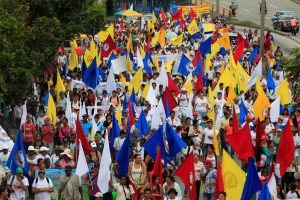Colombia’s Independence declaration is established on July 20th, 1810, by a merely symbolic act. However, this fact was preceded by several rebellions against Spanish colonization, in which the cities: Cartagena, Cali, Mompox, and Bogotá were very important and influenced to free Colombia from the Spanish yoke.
Historic context
During Spanish conquest, the first 100 years, the ethnic groups: Zambos, Mulattos, Mestizos, Indians, Blacks, and Indians were violently annihilated and subjected to forced and abusive labor carried out in the mines and crops.
The engines and revolts against the Spanish colonization began from 1555 led by the rebel groups called Tayrona and Quimbaya. Moreover, the comuneros insurrection, added to the black slave’s opposition in 1781, were the bases of Colombia’s Independence.
Dumb Motherland
Dumb Motherland, also called «the war first stage» is the name given to the time frame between 1810 and 1816 since, during these years, all Colombian regions rose up in arms to fight for their independence. Although, they were still considered King’s Spain property. Santa Cruz de Mompox district was the first to declare itself free.
